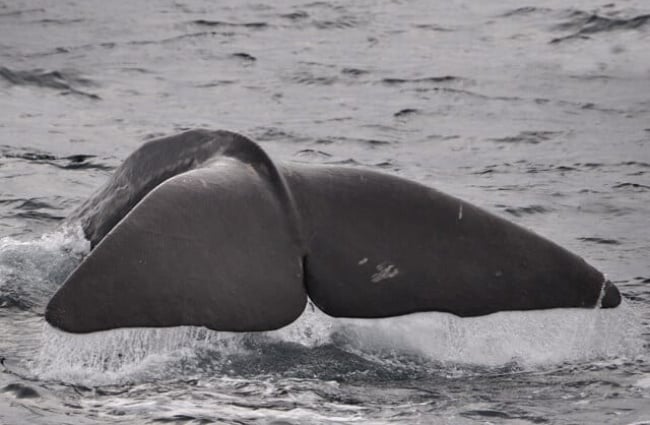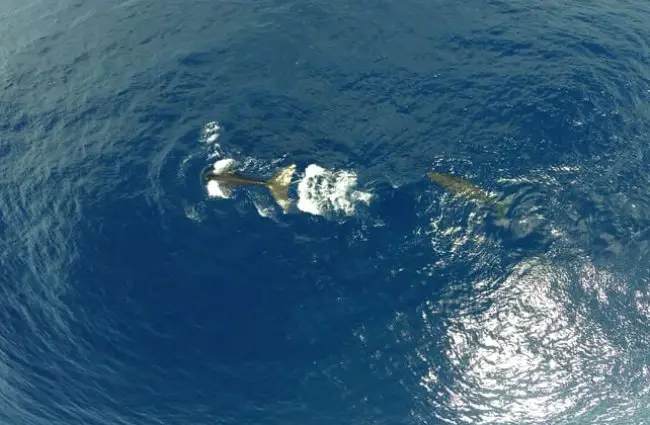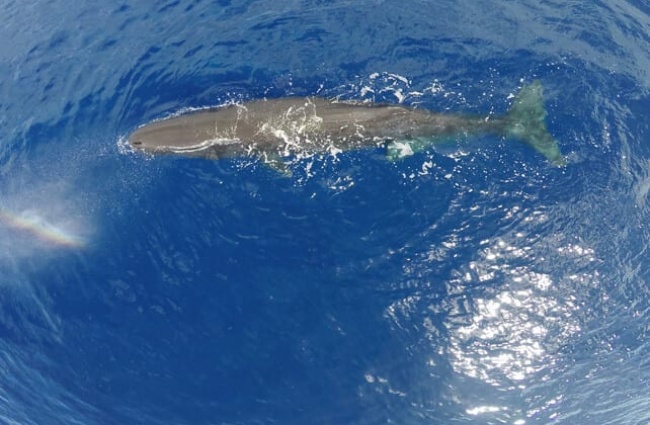The Majestic Sperm Whale: A Deep Dive into the Ocean’s Giant
The sperm whale, Physeter macrocephalus, is an iconic creature of the deep ocean, renowned for its massive size, distinctive head shape, and fascinating biology. More than just a large predator, the sperm whale plays a critical role in marine ecosystems and has captured the human imagination for centuries. This article explores every facet of the sperm whale’s life, from its evolutionary history and feeding habits to its social structure and interactions with humans.

Basic Information: Unveiling the Sperm Whale
As the largest toothed whale, sperm whales can grow up to 20.7 meters in length and weigh more than 57,000 kilograms. The most striking feature is their enormous, blocky head, which comprises about one third of the total body length. This unique structure houses the spermaceti organ, a substance historically prized for its oil, but now understood to be vital for buoyancy control and possibly for sound production.
Sperm whales inhabit all oceans, from the Arctic and Antarctic to tropical waters near the equator. They typically live in deep offshore waters but occasionally venture closer to shore in search of prey. These whales are highly social, living in complex family groups called pods that are led by older females.
Physical Characteristics
Beyond the colossal head, sperm whales have dark grey or brownish skin, often covered in scars from encounters with squid and other prey. They possess a single blowhole on the top of their head, producing a characteristic bushy spout. Their tail fins are triangular and powerfully propel them through the water.
Evolutionary History: A Lineage Stretching Back Millions of Years
Fossil evidence shows that sperm whales first appeared in the Oligocene epoch, roughly 34 to 23 million years ago. Early species were considerably smaller and had teeth adapted for grasping fish. Over time, they evolved the distinctive head structure and specialized teeth that enabled them to hunt large squid and other deep sea prey.
They belong to the order Cetacea, the suborder Odontoceti (toothed whales), and are closely related to the beaked whales.
Diet and Hunting Strategies: Masters of the Deep
Sperm whales are opportunistic predators with a diverse diet that includes fish, octopus, and a variety of squid. The bulk of their consumption consists of giant and colossal squid, which they hunt with remarkable skill.
They can dive to depths exceeding 2,200 meters and hold their breath for up to 90 minutes. Using echolocation, they locate prey in the dark depths by emitting a series of clicks and listening for the echoes that bounce off objects. When a squid is detected, the whale engages in a dramatic battle, using its powerful jaws and teeth to subdue the prey.

The Importance of Deep Sea Ecosystems
Sperm whales are keystone species that help structure deep sea ecosystems. Their feeding regulates squid populations, and their waste provides nutrients that support other organisms in the deep ocean.
Mating and Reproduction: A Slow Life Cycle
Females give birth to a single calf roughly every 4 to 5 years. Gestation lasts about 14 to 16 months, and calves are born in warmer waters. Calves are nursed for several years, during which they form a strong bond with their mothers.
Mating involves intense competition among males, who use vocal displays and physical confrontations to establish dominance and attract females. The pod’s social structure is matrilineal, with older females leading the group.
Sperm Whales and Human Culture: A History of Interaction
For centuries, humans have hunted sperm whales for their spermaceti oil, used in lamps, cosmetics, and other products. The whaling industry peaked in the 19th century, when tens of thousands of sperm whales were killed each year. Herman Melville’s novel Moby Dick famously immortalized the sperm whale and the dangers of whaling.
Today, sperm whales are protected by international law, and whaling has been drastically reduced. They still face threats from ship strikes, entanglement in fishing gear, and pollution.

Finding Sperm Whales in the Wild: A Guide for Enthusiasts
Observing sperm whales in the wild is a truly unforgettable experience but requires patience, knowledge, and respect.
- Location: The best places to see sperm whales include the waters off the Azores, Iceland, Norway, and the Gulf of Mexico.
- Season: They can be observed year round, but spring and summer are the most favorable months.
- Signs to Look For: Look for the bushy spout, the shape of the fluke as the whale dives, and the presence of other marine life.
- Responsible Tourism: Choose a reputable tour operator that follows responsible whale watching guidelines.
Sperm Whales in Captivity: Considerations for Zookeepers
Keeping sperm whales in captivity presents significant challenges due to their large size, complex social needs, and deep diving requirements.
- Enclosure Size: A vast enclosure is essential to provide ample space for swimming and diving.
- Social Grouping: Whales should be kept in groups that mirror their natural pod structure.
- Enrichment: Providing enrichment activities, such as toys and puzzles, stimulates their minds and prevents boredom.
- Diet: A varied diet of fish and squid is essential for maintaining health.
- Monitoring: Regular monitoring of physical and mental health is vital.
Given these challenges, many experts believe sperm whales are not suitable for captivity.
Interesting Facts About Sperm Whales
- Sperm whales can live for more than 70 years.
- They have the largest brain of any animal on Earth.
- Sperm whales communicate using complex clicks and low frequency pulses.
- The spermaceti organ may help with buoyancy and sound production.
- They can echolocate prey from great distances.
The sperm whale remains a fascinating and enigmatic creature, captivating scientists and nature enthusiasts alike. Understanding their biology, behavior, and conservation needs is essential for ensuring their survival for generations to come.

![Red Angus Closeup of a beautiful Red Angus cowPhoto by: U.S. Department of Agriculture [pubic domain]https://creativecommons.org/licenses/by/2.0/](https://animals.net/wp-content/uploads/2020/03/Red-Angus-4-238x178.jpg)




![Red Angus Closeup of a beautiful Red Angus cowPhoto by: U.S. Department of Agriculture [pubic domain]https://creativecommons.org/licenses/by/2.0/](https://animals.net/wp-content/uploads/2020/03/Red-Angus-4-100x75.jpg)

